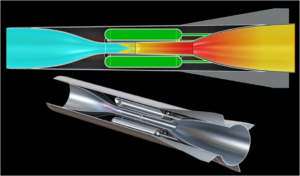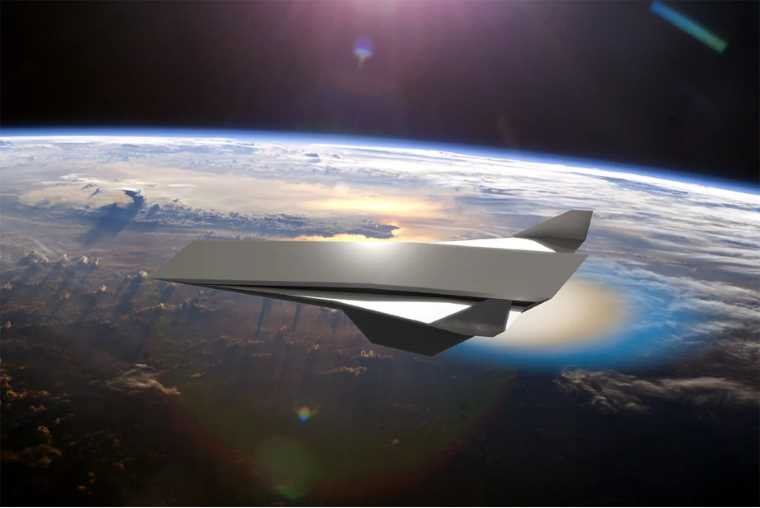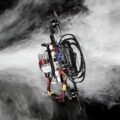A morphing hypersonic engine that can change shape while in flight is now under development thanks to a grant from the Naval Research Laboratory. Although in the early stages of development, a morphing hypersonic engine could provide increased performance and efficiency over current hypersonic engine designs, leading to aircraft that can travel anywhere from 5 to 17 times the speed of sound.
Air-Breathing Hypersonic Aircraft Finally Becoming a Reality
In the 1960s, humans first traveled at hypersonic speeds, meaning above five times the speed of sound. Most of these trips were made aboard a rocket-fueled craft that was destined for outer space since entering (or escaping) Earth’s orbit requires one to travel around Mach 22.
Since then, efforts have increased to develop air-breathing aircraft that can travel well over Mach 5 without the need to carry rocket fuel to achieve such speeds. The most popular engines are called scramjets, short for supersonic combustible ramjets, which can take in air at supersonic speeds and use it in the combustion cycle to generate incredible speeds. Still, many of those designs are wanting in efficiency and performance.
Now, a research team from the University of Central Florida has received a grant from the Naval Research Laboratory to begin designing a morphing hypersonic engine that may end up solving some of high-speed air travel’s biggest challenges.
Self-Optimizing Adaptable Scramjet Engine Could Lead to Hypersonic Engine Breakthroughs
Due to the extreme nature of hypersonic flight and the risk of catastrophic failures, most aircraft under development try to limit the complexity of their individual parts. This includes the wings, body, and even the engines.
“Most hypersonic engines are structurally fixed due to the challenging flight environment,” explains the project’s principal investigator, Kareem Ahmed, a professor in UCF’s Department of Mechanical and Aerospace Engineering. Unfortunately, Ahmed says, this can limit the incremental improvements in performance and efficiency still needed to make regular hypersonic flight, both military and commercial, viable. However, the UCF researcher says this is about to change.
“Our research will show the performance gains from an adaptable engine configuration that would self-optimize its surfaces to maximize performance power, thrust, and travel distance, which is the first of its kind for hypersonic engines,” he explains.


According to a press release announcing the newly awarded grant, Ahmed and his UCF team have developed an “aerothermodynamic” model for the hypersonic, morphing scramjet engine and “are currently in the stage of experimental testing it to assess the performance.” That same release explains that aerothermodynamics “analyzes the interaction of gases at high speeds and elevated temperatures.”
For Ahmed and his team, this means the ability to model various components of their morphing hypersonic engine in a simulated environment and then expose those changes to the simulated stresses a Mach 5+ engine is sure to encounter. If successful, these changes could lead to better performance and more efficient fuel usage, both areas in hypersonic travel that are in need of advancement.
A Morphing Hypersonic Engine Could Enable Flying from New York to LA in 30 Minutes
Although Ahmed’s team is in the very early stages of development, the long-term goals of hypersonic travel include high-performance military vehicles, rapid emergency alert response, and even high-speed commercial travel. According to the UCF team, hypersonic engines could reduce current flight times between New York and Los Angeles from 6 hours to as little as 30 minutes.
Ultimately, there are still a number of steps needed to bring the dreams of a morphing hypersonic engine to fruition, but given his impressive track record in previous DOD-funded developments, Ahmed and his team appear poised to be at the forefront of those technological leaps.
“We are very happy for being selected for the program,” said Ahmed. “Our lab has been a leader and innovator in high-speed and hypersonic propulsion, and this program gives our group the opportunity to contribute and make an impact.”
Christopher Plain is a Science Fiction and Fantasy novelist and Head Science Writer at The Debrief. Follow and connect with him on X, learn about his books at plainfiction.com, or email him directly at christopher@thedebrief.org.

